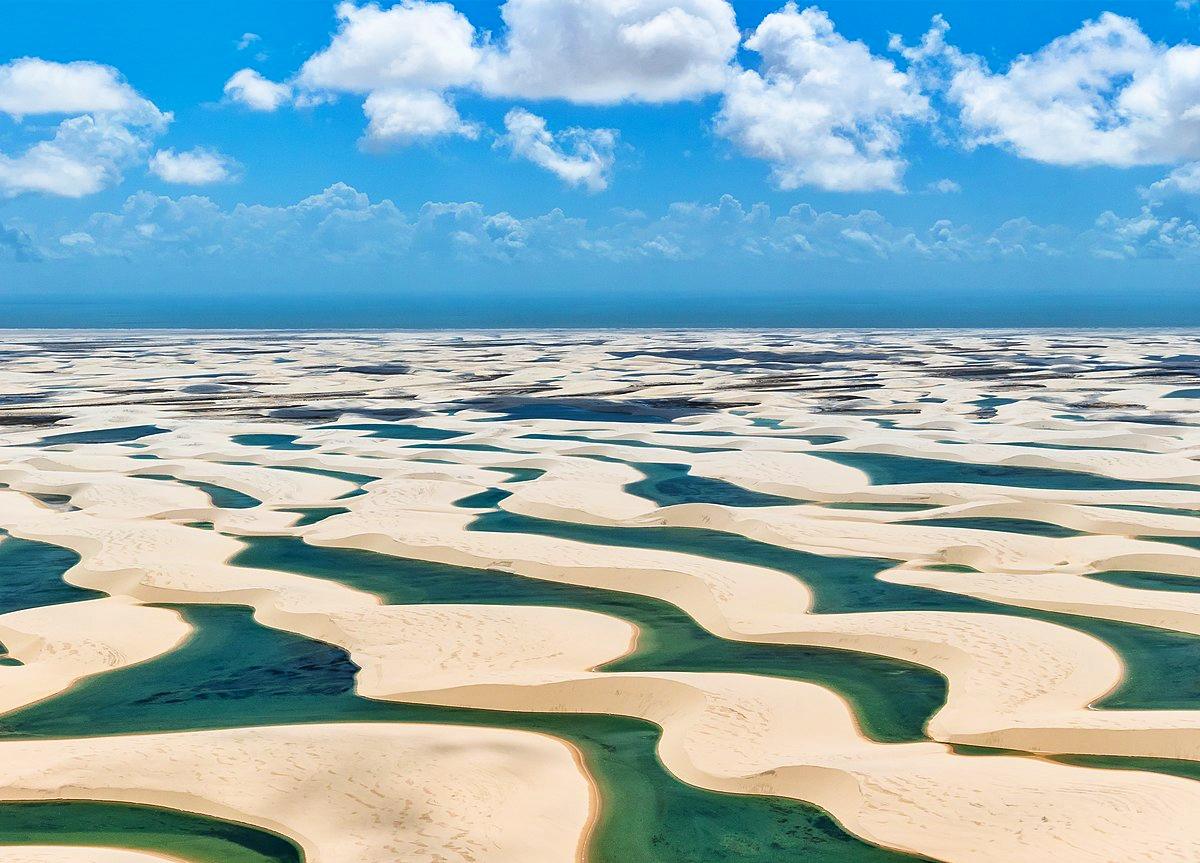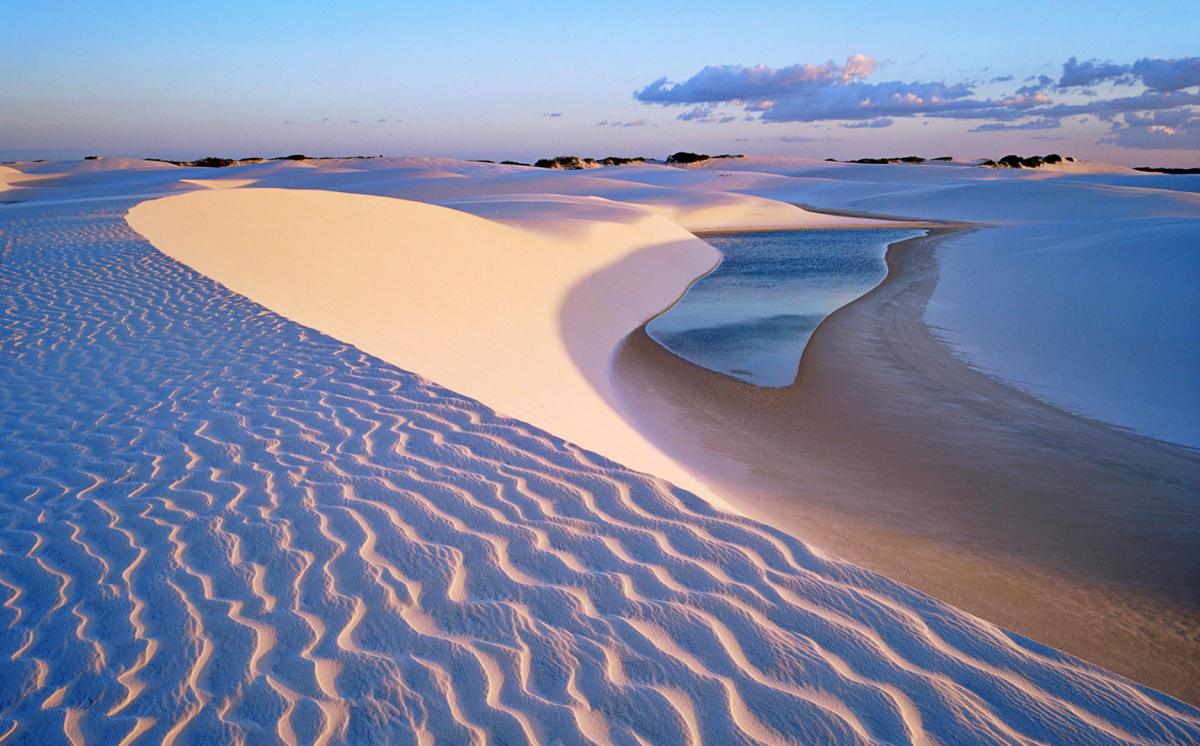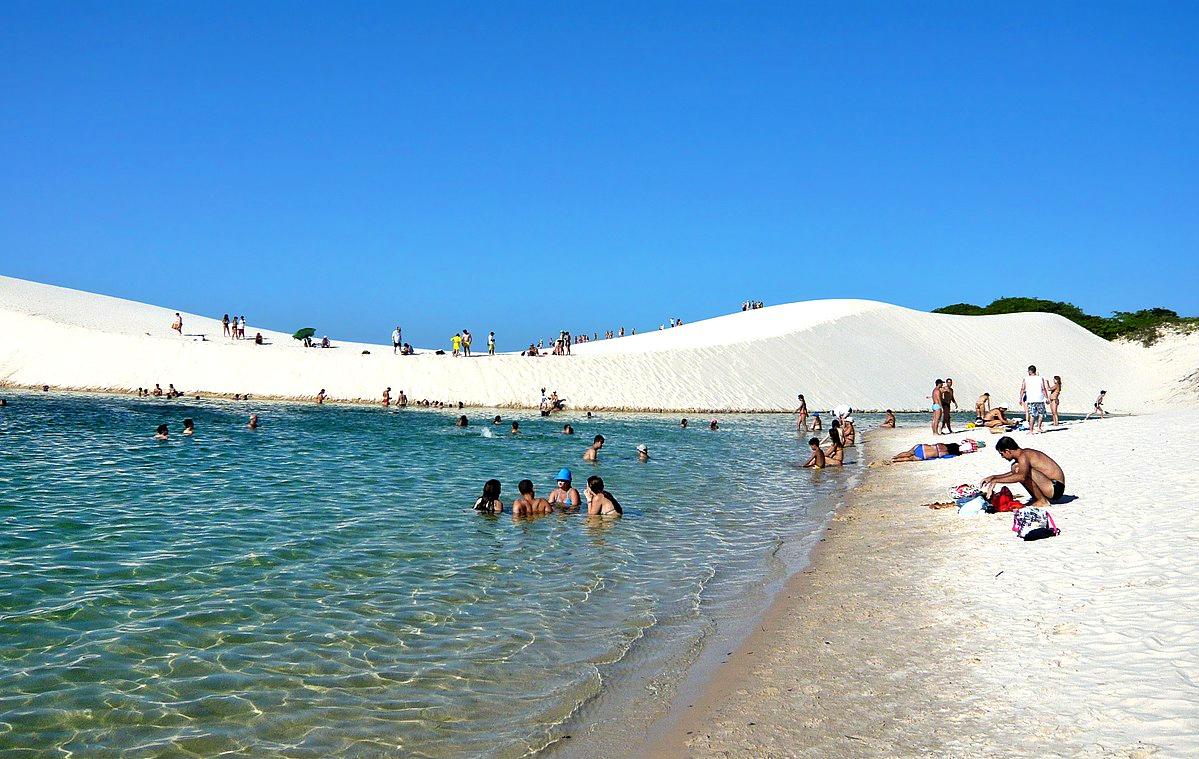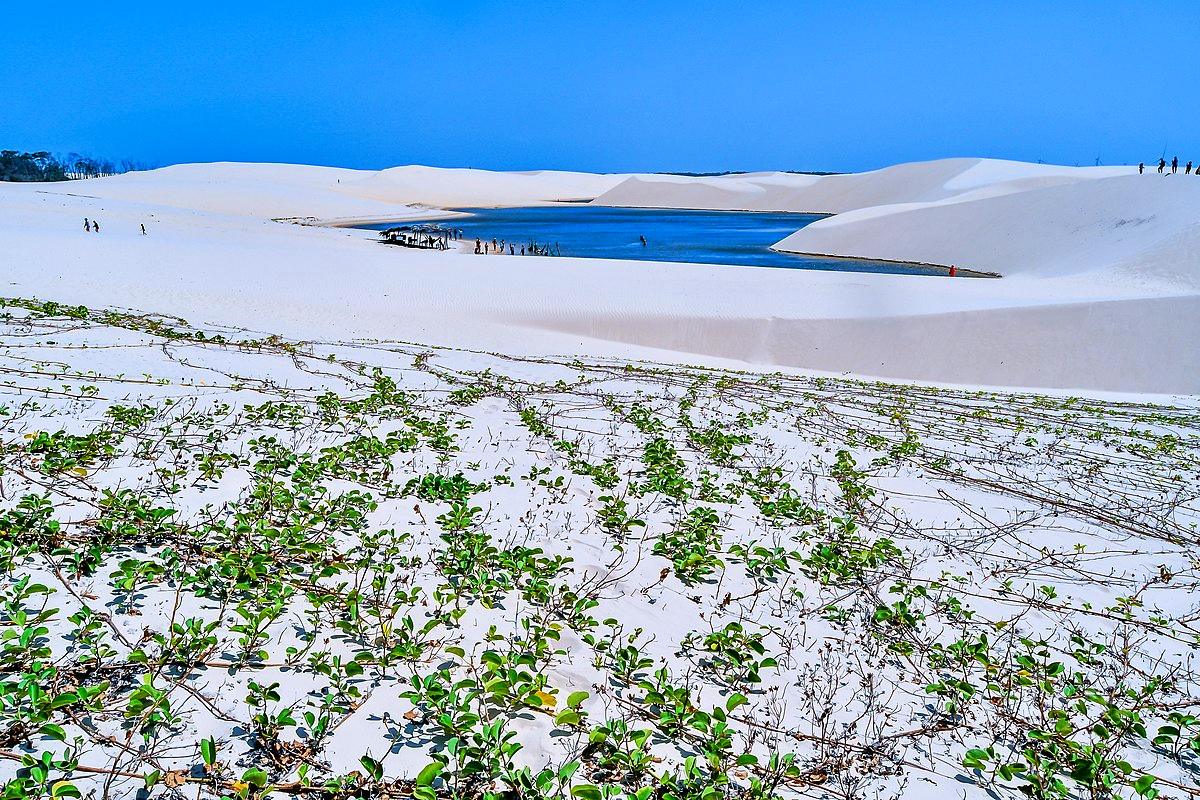Experience The Unique Lençóis Maranhenses In Brazil This Year

Anyone looking for a unique experience in 2023 won’t go wrong with a visit to Lençóis Maranhenses on the coast of Brazil. This fascinating national park seems out of this world with its endless sand dunes, with ribbons of water in each valley. Meanwhile, it is a marvelous place to bathe and enjoy the sun.
Lençóis Maranhenses National Park in northeastern Brazil
Located on the coast of northeastern Brazil, Lençóis Maranhenses, which translates from Portuguese as the sheets of Maranhenses, is a national park. Meanwhile, when visiting, this marvelous place might seem like a desert, with endless sand dunes. However, at the right time of year, turquoise lagoons weave through each valley in the sand, making it extraordinary.

The unique national park is located in the state of Maranhão in northeastern Brazil and spans 43 mi (70 km) along the Atlantic coastline. According to UNESCO, while at times it seems like a desert, this place receives 47 inches of rain each year.
This unique natural phenomenon is caused by two rivers, Parnaíba and Preguiças, which run from the south. Meanwhile, the rivers carry sand from the country’s interior to the ocean when it is deposited. Moreover, over the centuries, the wind has swept the sand as much as 31 mi (50 km) inland, to create massive dunes. In fact, these can reach up to 130 ft (40 m) in height. For this reason, the park attracted its name, Lençóis Maranhenses, or the bedsheets of Maranhão.
How are the lagoons formed?

Meanwhile, these beautiful, turquoise lagoons are a perennial phenomenon. During the wet season, from January through June, torrential rainstorms fill the dips between the dunes with water. This creates thousands of crystal-clear blue lagoons waiting to enjoy.
It turns out the water is prevented from draining away by an underlying layer of impermeable rock. Moreover, the national park looks surreal almost like something from a Salvador Dali painting. For this reason, the park attracts many visitors each year.
About visiting Lençóis Maranhenses

The best time to visit Lençóis Maranhenses is between July and September. To get there, head to the nearby town of Barreirinhas, around a 50-minute drive south of the park. Here, it is possible to rent a four-by-four vehicle to navigate the rough terrain of the park. However, in some places, vehicles need to be ferried across a river a number of times on the way to the destination.
Some of the lagoons can span 300 feet and have a depth of up to 10 feet. On average, annual temperatures can range from 79 to 83.3 degrees Fahrenheit (26 to 28.5 degrees Celsius. Meanwhile, crystal-clear water in the lagoons has average temperatures from 81.5 to 90 degrees Fahrenheit (23 to 27 degrees Celsius).
These welcoming temperatures make this a perfect place to swim in the water or relax on the warm sand while gazing at the unique landscape. In fact, lagoons Azul and Bonita are particularly recommended to visit. However, a guide is recommended as, with this otherworldly landscape, it is easy to get lost in the sand dunes.
Meanwhile, Lençóis Maranhenses is not a barren landscape, as mangrove oases are home to local ecosystems. Throughout the tepid waters, it is easy to spot wolffish that have come from the nearby rivers. Reportedly, during the dry season, when the lagoons evaporate, the wolffish become dormant, burrowing into the mud to survive until the rains return. Moreover, the park looks like an arid, never-ending desert.
Enjoy an aerial view of Lençóis Maranhenses in the video included below.
